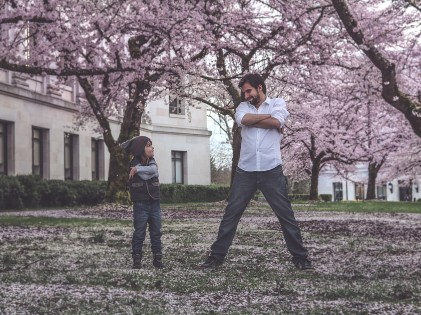Before diving into the finer details, you need to understand what bird nesting during or after divorce is all about. After a couple decides to separate or divorce, the children continue living in their homes while one of the separated or divorced parents keeps moving and out.
This works on a rotating basis and is quite similar to birds flying in and out of their nest. When the parents are not in their primary home, taking care of the kids, they spend their time in their second homes. Some separated couples take a house on rent, while some share an apartment where they live when they are not in their nest with their kids. Now, is that a good option? Find out.
The Positives
 Looking deeply, birds nesting has quite a few positive sides to it. The main plus point is that the kids hardly know about their parents’ separation or divorce. Since they are having the company of one parent or the other from time to time, they barely notice what’s going on between their parents.
Looking deeply, birds nesting has quite a few positive sides to it. The main plus point is that the kids hardly know about their parents’ separation or divorce. Since they are having the company of one parent or the other from time to time, they barely notice what’s going on between their parents.
Just consider a situation when kids shift back and forth between those two homes that their parents have separately created. Not only is that impractical, but such times are also very emotionally challenging for the little ones. Different rules, routines, and atmospheres in two different homes can be pretty hard on them. It will be a stiff challenge for the kids.
This is where a bird’s nest arrangement can play a major role. The concept reduces the complexities and allows your children to stay wherever they are and have their way. They can keep their belongings to themselves and spend quality time with each parent. Oh yes, birds nesting is financially advantageous as well. But the next question that arises here is what should be done to make this a success? Take it easy. Following are some tips for you.
The House Belongs to the Kids
 You have to learn to accept one straight and important fact – the nest belongs to the kids. Period. You guys must remember that it’s not that so-called family home it once used to be. So, when household chores like mopping the floors, cleaning the toilets, mowing the lawns, etc., are necessary, do it without resenting your co-parent for not doing them. It’s your kids’ house, and doing these chores are necessary. No questions asked.
You have to learn to accept one straight and important fact – the nest belongs to the kids. Period. You guys must remember that it’s not that so-called family home it once used to be. So, when household chores like mopping the floors, cleaning the toilets, mowing the lawns, etc., are necessary, do it without resenting your co-parent for not doing them. It’s your kids’ house, and doing these chores are necessary. No questions asked.
Sharing the Costs
This is one topic you need to discuss with your co-parent. Be clear about who will pay for what. You need to settle things between yourselves. Decide who will pay the bills, who will buy the groceries, who will pay for the maintenance and repairs, who will pay for the hot water service, so on and so forth.
Will the division of costs be by half, or will the balance stay tilted towards the more capable parent? One nice thing you can do to run the household is open a joint account. It is important to maintain transparency. Both of you can deposit a fixed sum of money every month, and agree on the expenses that will go from the joint funds. Be very specific about what one can and cannot pay for from the joint account.
Proper Communication
 You need to check on your kids and each other regularly. Communication should be calm and clear. You can choose a particular day every month so that you catch up with each other and have a detailed discussion on issues that might have cropped up. Set up a communication board at a place that everyone at home can view.
You need to check on your kids and each other regularly. Communication should be calm and clear. You can choose a particular day every month so that you catch up with each other and have a detailed discussion on issues that might have cropped up. Set up a communication board at a place that everyone at home can view.
You can also use some co-parenting apps through every member of the family to keep track of everything. Whenever possible for you, try to come up with decisions together with the rest of the household. This is preferable in cases when changes need to be made in arrangements. Stay away from conflict as much as you can. Finding a practical and amicable solution will work.
You have to be tolerant and patient with your former partner, whatever the situation is. For the happiness of their kids, every parent makes a lot of compromises and adjustments. Because, at the end of the day, there’s nothing more valuable than that?




